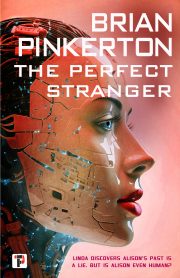Worldbuilding with the Medieval Industrial Revolution, Part Two
by Kevin L. O’Brien
 Welcome to Part Two of a series that examines technology and medieval machines that can be used in worldbuilding.
Welcome to Part Two of a series that examines technology and medieval machines that can be used in worldbuilding.
In the first post of this series, I described how a quasi-medieval society could smelt all the iron it needed to generate and sustain an industrial revolution. However, while it could be argued that iron fueled the classical industrial revolution of 18th and 19th century Britain, it didn’t do the same for the industrial revolution of the Middle Ages.
There were two major differences between the two. The first is that the classical revolution started when the early industrialists wanted to produce cast iron tools, implements, and household items, which eventually led to automated factories making standardized parts in an assembly line process, whereas the medieval revolution began with monasteries developing workshops to make themselves self-sufficient, which eventually led to the widespread adoption of these workshops to manufacture better quality crafts more easily.
The second difference is that the classical revolution used heat produced by burning first wood, then charcoal, coal, and eventually coke as a power source, which eventually led to the development of the steam engine, whereas the medieval revolution adopted the Roman idea of the waterwheel, eventually adapting it to wind, human, and animal power. Wheels powered by the wind and physical strength could be placed anywhere, but had the disadvantage that they could not run continuously, because sometimes the wind ceased to blow and the people or animals that turned the wheel grew tired and needed to rest. Waterwheels could technically only be placed where there was a source of flowing water, but they had the advantage that the water wouldn’t stop flowing except in cases of extreme drought. And the sources need not have been natural. For example, ditches, flumes, and pipes were used to redirect water from a nearby natural source, aqueducts were used to deliver water from a distant source into a nearby reservoir, and weirs were built to create waterfalls.
The force exerted by the flow of water turns the wheel, which in turn generates work. The wheels are attached to shafts that spin as the wheel turns, thereby transferring the force to wherever work needs to be done. Early on, and even well into the High Middle Ages and the Renaissance, the majority of waterwheels powered gristmills for grinding grain into flour, malt, and meal (though they were also used to grind other materials as well). The simplest design involved a horizontal wheel connected to a vertical shaft that was attached to a millstone. However, many wheels were placed vertically and were attached to horizontal shafts, so gears were used to transfer the force to a vertical shaft that then turned the stone. Gears were also used to step the rotational speed of the shaft up or down, so as to increase the force exerting by a slow water flow or decrease the force exerted by a fast flow. More importantly, gears were used to transfer the force to other shafts, horizontal or vertical, to operate a wide variety of machinery simultaneously.
Few of these machines were operated by the shaft itself (millstones being the most prominent example), but common ones were grinding stones, such as those used to sharpen tools or to crush oil seeds, and chains wrapped around the shafts to operate hoists and pumps. Instead, the machines tended to be operated by simple devices that were attached directly to the shaft. One was the crank, which created a back-and-forth motion as the shaft spun. It was typically used to operate saws for cutting wood or stone, or scoring metal. Meanwhile, gears were used to transfer rotational motion to rollers for shaping metal, lathes for carving wood, and spinning mules for creating thread and yarn.
Another versatile and widely used device was the cam. Essentially a stud, it turned around the axis of the shaft as the shaft spun. Its purpose was to trip levers that operated the machines. These levers could operate bellows for bloomeries and Catalan forges, pumps to raise water out of mines, and presses for squeezing grapes, olives, and wet paper. The machines they were perhaps most associated with were trip hammers. These were able to strike harder and faster than people were able to manage. They were used to crush ore before the development of pestle stamps, but they were also used to work iron and other metals, to full cloth and leather, to pound rags and wood pulp to make paper; in general, to perform any kind of work that required strength and speed that was beyond the capacity of man or beast.
As with bloomeries, what are called “model factories” used by monasteries and villages tended to be small, with generally one or at most a few waterwheels operating a gristmill and perhaps a sawmill or a hammer mill or bellows for Catalan forges, or a combination of two or more. However, in some places conditions were ripe for the establishment of large industrial complexes. A good example of such a place was the old German town of Joachimstahl, now the Czech town of Jáchymov, where silver was discovered in the mountains around the town at the beginning of the 16th century. The abundance of swift-flowing mountain streams and trees for lumber led to the establishment of an extensive water-powered system that benefited the miners and the metallurgists. Waterwheels were used to ventilate the mines; to drain them; to lift ore to the surface; to crush the ore; to ventilate the smelting furnaces; to create bar iron; to manufacture wrought iron and brass tools; to cut trees into lumber; to lift water from a stream to a system of flumes; and of course to grind flour for baking bread.
It is worth noting that even after the development of the steam engine, waterwheels continued to be used well into the classical industrial revolution, especially in places or for uses where steam power was impractical. Even after the waterwheel became obsolete, its design influenced the invention of electrical turbines and is currently part of plans for sustainable systems.
This series concludes next week, with Part Three.
 Kevin L. O’Brien is a hybrid author who has sold stories to Weirdbook and Sword and Sorceress, and has published ebooks through Kindle and Smashwords. He primarily writes speculative fiction, particularly sword & sorcery and paranormal thrillers, but he has also branched out into other genres, including mainstream fiction. He is the creator of Team Girl. His general interest in science and history provides the basis for his posts. He lives in Denver with his three cats.
Kevin L. O’Brien is a hybrid author who has sold stories to Weirdbook and Sword and Sorceress, and has published ebooks through Kindle and Smashwords. He primarily writes speculative fiction, particularly sword & sorcery and paranormal thrillers, but he has also branched out into other genres, including mainstream fiction. He is the creator of Team Girl. His general interest in science and history provides the basis for his posts. He lives in Denver with his three cats.


